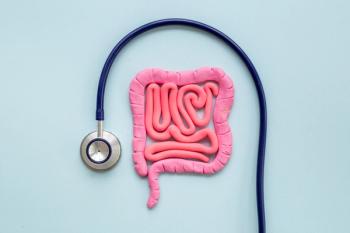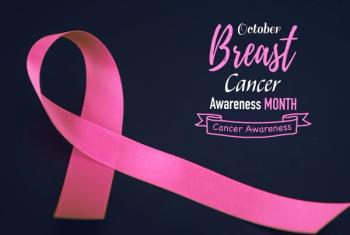
Monkeypox in Pregnancy: Clinical Considerations
What we know about monkeypox in pregnancy, including treatment recommendations, vaccination, and postpartum care.
What we know
- Monkeypox can be transmitted to the fetus during pregnancy or to the newborn through close contact during and after birth. Spontaneous pregnancy loss and stillbirth, and preterm delivery, have been reported in confirmed cases.
- Neonatal monkeypox has been reported.
- Monkeypox is similar to smallpox (Variola virus) but seems to be less severe in its manifestations and resulting illnesses during pregnancy, including hemorrhagic complications and death. Variola virus infection during pregnancy has been reported to cause pregnancy loss, stillbirth, preterm birth, and congenital infection.
Signs and symptoms
- The signs and symptoms of monkeypox infection in pregnancy appear like those of nonpregnant people, including prodromal symptoms such as fever, headache, lymphadenopathy, malaise, sore throat and cough, and rash.
- The cause of fever may be difficult to identify until the rash appears.
- It is important to differentiate a monkeypox diagnosis from dermatoses of pregnancy, including pruritic urticarial papules and plaques of pregnancy.
- Monkeypox lesions can mimic the appearance of other infections. Patients with rashes that appear to be more common infections, such as varicella zoster or sexually transmitted infections (STIs), need to be evaluated for a characteristic monkeypox rash (IMAGES). Providers should also consider diagnostic testing, especially if epidemiologic risk factors for monkeypox virus infection are present. The Centers for Disease Control and Prevention (CDC) recommends a broad approach to testing as simultaneous infections of monkeypox virus and STIs have been reported.
Guidance
Providers should prioritize currently or recently pregnant and breastfeeding people with monkeypox infection for medical treatment before non-pregnant individuals, as the likely increased risk of severe disease, fetal transmission during pregnancy, and severe newborn infection via close contact during and after birth.
Treatment
Tecovirimat
- At the time of this article’s publication, there is not yet a treatment approved specifically for monkeypox infections. However, antivirals developed for use in patients with smallpox may be beneficial.
- If treatment is indicated, tecovirimat—also known as TPOXX—should be considered as the first-line antiviral for pregnant, recently pregnant, or breastfeeding people. Tecovirimat is a US Food and Drug Administration (FDA)-approved antiviral medication for the treatment of smallpox in children and adults. It is expected to have antiviral activity against monkeypox and is FDA-authorized for this indication under an expanded access protocol.
- The information regarding the effects of tecovirimat on fetal and reproductive development is limited to animal studies, in which subject animals were given a dose that was 23 times higher than the recommended human dosage. No specific fetal effects were noted, but it is unclear whether it prevents congenital monkeypox.
- While tecovirimat was present in subject animals’ breast milk, it is unknown if the levels are sufficient for treating a breastfeeding child with monkeypox infection. If indicated, breastfeeding children with monkeypox infection should be treated independently.
Cidofovir and brincidofovir
While they are considered alternative antiviral therapies for treating monkeypox infection, animal studies have shown evidence of teratogenicity so they should not be used to treat people in their first trimester of pregnancy. Their presence in breastmilk is also unknown, so it should also be avoided in breastfeeding people in case of serious adverse reactions in the breastfeeding infant.
Vaccinia Immune Globulin Intravenous (VIVIG)
Researchers have not yet conducted animal reproduction studies with VIVIG, so there is little data on whether it can cause fetal harm during pregnancy, or on a person’s future fertility. However, immune globolins have been used during pregnancy for many years without any apparent negative reproductive side effects. Providers should evaluate the risks and benefits of VIVIG for each individual patient and exercise caution when administering to a breastfeeding person, as it may be excreted in breast milk.
Vaccines
JYNNEOS
- Live, nonreplicating viral vaccine licensed for the prevention of smallpox and monkeypox infection.
- Vaccine-associated risks in pregnancy are unknown, but animal studies indicated no evidence of harm to a developing fetus.
- Due to its nonreplicating quality, it should not present a risk of transmission to breastfed infants, making it the vaccine of choice for both pregnant and breastfeeding people.
ACAM2000
Replicating viral vaccine licensed for smallpox prevention. Contraindicated in pregnant and breastfeeding people due to risk of pregnancy loss, congenital defects, and fetal-infant vaccinia virus infection.
Prophylaxis
- Pre- and post-exposure prophylaxis should be offered when indicated to pregnant or breastfeeding people.
- As with any treatment, shared decision-making should be used when discussing the risks and benefits with patients.
Skin-to-skin contact during isolation
- Direct contact between a patient in isolation for monkeypox and their newborn is not advised. Separating the monkeypox-infected person from their newborn is the best way to prevent transmission, and full-time rooming-in is not recommended during the infectious period. Providers should counsel the patient on the transmission risk and potential consequences for severe disease in newborns. If the patient chooses to have infant contact during their infectious period, the following precautions should be taken:
- No direct skin-to-skin contact
- Infant should be fully clothed or swaddled, and after contact occurs, the clothing or blanket should be replaced.
- Patient should always wear gloves and a fresh gown, covering all visible skin below the neck.
- Soiled linens should be removed from the area.
- The patient should wear a medical mask or other well-fitting source control during the visit.
- Discharge planning should consider a patient’s isolation period duration, ability to strictly adhere to isolation recommendations and availability of alternate caregivers.
- Breastfeeding should also be delayed until the isolation period has concluded.
Helpful Links
Updated Case-finding Guidance: Monkeypox Outbreak—United States, 2022 Clinician FAQs Duration of Isolation Procedures
Reference
- Clinical Considerations for Monkeypox in People Who are Pregnant or Breastfeeding. CDC. Published July 18, 2022. Accessed July 26, 2022.
https://www.cdc.gov/poxvirus/monkeypox/clinicians/pregnancy.html
Newsletter
Pharmacy practice is always changing. Stay ahead of the curve with the Drug Topics newsletter and get the latest drug information, industry trends, and patient care tips.





























































































































